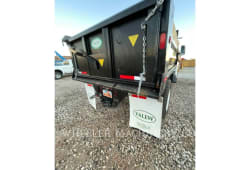Construction Debris Removal: A Complete Guide
4 Min read
)
April 8, 2025
Construction projects, whether large or small, generate a significant amount of debris. Proper construction debris removal is essential for maintaining safety, reducing environmental impact, and ensuring compliance with local regulations. In this guide, we’ll explore the best ways to remove construction debris, cost factors, business opportunities, and eco-friendly practices.
Why Construction Debris Removal Matters
Safety: Leftover materials like nails, glass, and wood scraps can be hazardous to workers and pedestrians.
Environmental Concerns: Improper disposal contributes to landfill overflow and pollution.
Efficiency: Removing debris promptly allows construction projects to proceed smoothly.
What Is Construction Debris Removal?
Definition
Construction debris removal involves the collection, transportation, and disposal of waste materials generated during construction, renovation, or demolition.
Types of Construction Debris
Wood – Lumber scraps, plywood, and sawdust.
Concrete & Asphalt – Broken concrete, bricks, and asphalt chunks.
Drywall & Plaster – Leftover drywall, gypsum boards, and insulation.
Metal – Steel, aluminum, and copper wiring.
Hazardous Materials – Paint cans, asbestos, and chemicals (must be handled with care).
Standard Waste Disposal vs. Specialized Debris Removal
Unlike regular trash collection, construction debris removal often requires specialized equipment, recycling processes, and adherence to safety regulations.
What Is the Best Way to Remove Construction Debris?
:format(webp))
1. Hiring a Professional Debris Removal Service
A professional service ensures quick and safe removal, reducing the risk of injury and legal issues.
2. Renting a Dumpster
For large-scale projects, renting a dumpster provides an easy way to manage and dispose of waste efficiently.
3. Recycling and Repurposing
Materials such as wood, metal, and concrete can be repurposed or recycled, reducing environmental impact and disposal costs.
4. Using Municipal Waste Services
Small-scale projects may qualify for municipal bulk waste pickup, but regulations vary by location.
Construction Debris Removal Cost: Pricing & Factors
1. Factors Affecting Cost
Volume of Debris – Measured in cubic yards or truckloads.
Type of Debris – Hazardous materials require specialized disposal, increasing costs.
Location & Disposal Fees – Urban areas tend to have higher disposal fees.
Labor Costs – DIY vs. hiring professionals significantly impacts the price.
2. Estimated Cost Breakdown
3. How to Save on Construction Debris Removal
Recycle & Repurpose – Reduces waste and disposal fees.
Rent a Dumpster – More cost-effective for ongoing projects.
Compare Service Providers – Get multiple quotes for the best deal.
Starting a Construction Debris Removal Business
1. Steps to Launching a Successful Business
Research local permits and regulations.
Invest in trucks, dumpsters, and safety equipment.
Obtain licenses and insurance.
Build relationships with construction firms and contractors.
Market services using SEO, social media, and local advertising.
2. Profit Potential & Revenue Streams
Per Load Pricing – Charge per cubic yard or truckload.
Specialized Removal – Offer services for hazardous materials.
Dumpster Rental – Provide long-term waste management solutions.
Recycling Partnerships – Sell recyclable materials for extra income.
3. Challenges & How to Overcome Them
High disposal fees → Find affordable disposal sites.
Competition → Differentiate with eco-friendly and budget-friendly services.
Operational Costs → Optimize fuel consumption and labor efficiency.
How to Properly Dispose of Construction Debris
:format(webp))
Sort Waste – Separate recyclable and non-recyclable materials.
Use C&D Waste Facilities – Dispose of waste legally at certified locations.
Donate Materials – Usable materials can benefit community projects.
Follow Local Regulations – Avoid fines by adhering to waste disposal laws.
Eco-Friendly Construction Debris Removal Practices
Recycling – Convert wood, metal, and concrete into reusable materials.
Donations – Habitat for Humanity and other organizations accept building materials.
Green Waste Facilities – Partner with facilities that prioritize sustainability.
Encourage Sustainable Construction – Educate clients on waste reduction methods.
Hiring a Construction Debris Removal Service: What to Look For
Licensing & Insurance – Ensure the company is certified and covered.
Transparent Pricing – Look for clear, upfront cost estimates.
Eco-Friendly Disposal – Verify recycling policies and green practices.
Customer Reviews – Check online ratings and testimonials.
Frequently Asked Questions (FAQs)
1. How much does construction debris removal cost?
Prices range from $100 to $2,000+ depending on volume, type of debris, and location.
2. Can I remove construction debris myself?
Yes, but large-scale debris removal may require dumpster rental or professional services.
3. How can I start a construction debris removal business?
Obtain the necessary permits, purchase equipment, and market your services effectively.
4. What types of construction debris can be recycled?
Concrete, metal, wood, drywall, and asphalt are commonly recyclable materials.
5. Is construction debris removal tax-deductible?
For businesses, debris removal may be considered an operating expense, making it tax-deductible.
Conclusion: Choosing the Right Construction Debris Removal Solution
Proper construction debris removal is essential for safety, environmental conservation, and cost efficiency. Whether hiring a professional service, starting a business, or handling debris disposal yourself, understanding the best practices ensures compliance and sustainability.
Final Tips: ✔ Compare service providers for the best rates. ✔ Prioritize recycling to reduce waste. ✔ Stay informed about local disposal regulations.

Caleb Woods is an experienced content specialist and an editor at Boom & Bucket, blending his journalism background with expertise in the heavy equipment industry. He delivers engaging, informative content to help professionals stay informed and make smarter decisions in the machinery market.



